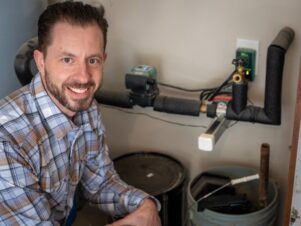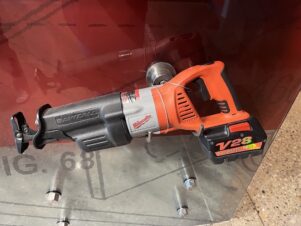Long Island’s rich hydronic heritage can be seen in the houses that cover the island, as well as the plumbing and heating shops that serve them. Common is the moderately sized, turn-of-the-century house that’s seen addition after addition, with as many changes to the heating system. The family-owned hydronic shops run by passionate “wet-heads” continue to leave their mark on the heating landscape.
Hunter Botto will be the first to attest to this. He and his brother, Roger, are third generation owners of Botto Bros. P&H, in Hicksville, NY. Their grandfather started the company in 1937, and they purchased ownership in the ’80s. Today, it’s a 10-person, multi-faceted firm that’s commercially and residentially focused. Plumbing and heating is their bread and butter, but kitchen and bath remodels and generator installations keep them busy year-round.
“One thing we’ve found is that diversifying helps build a bigger network of clients,” said Hunter. “We’ll land a remodeling job, and later in the year they’ll call us back to service a boiler or install a generator.”
In early February, Botto technicians were completing a generator installation when the owner asked them to check their radiant heating, and if a gas $1,400 gas bill was normal for a 3,500-square-foot home in January. When they stepped into the home’s mechanical room, what they found was so bizarre that they texted Hunter a bunch of photos.
Steam to radiant disaster
The circa-1910 house had been expanded and remodeled a number of times, with the heating system constantly gaining complexity. The original cast-iron steam radiation was accompanied by a jumble of air handlers and two different in-floor systems, none of which operated properly. The floor didn’t heat well, and the two-pipe steam system was banging. Oddly enough, the entire system was served by one oversized steam boiler.

A Burnham Independence supplies steam to cast-iron radiators, while an ES2 heats in-floor zones and DHW via a Burnham Alliance sidearm tank.
“I had to check it out myself,” said Hunter. “The boiler – which was 20 years old – was twice the size it needed to be. There was no proper equalizer; the four-inch header went right into the boiler, and three, two-inch supplies Teed off the big main. But it gets better.”
“Instead supplying DHW, the steam boiler’s internal coil was piped out to a 30-gallon buffer tank – which was just an old indirect-fired water heater. A circulator moved water from the tank to two radiant supply manifolds; one which supplied PEX under the marble kitchen floor, another for a staple-up zone in the dining room. The PEX didn’t receive the flow or temperature it needed. DHW was supplied by an old gas-fired water heater, and an upstairs den was heated by a single gas-fired air handler.”

Because the home uses both water and steam heating elements, Botto Brothers used two boiler to share the load.
During Hunter’s visit, the homeowner decided she wanted to lower her fuel bills and restore heating function by replacing the system. To hold her over for a few weeks until they could design and install a new system, Hunter de-rated the existing boiler to 50 percent of its 300,000 BTUH capacity. He then completed a heat load calculation in the rooms with radiant heat, and measured the radiators.
Share the load
“Instead of converting the radiators to water, we decided to divide the load between a new steam boiler and a new water boiler,” said Hunter. “We started on February 17th and finished five days later. The homeowner headed to Costa Rica during the process, which made life easier for us.”
Once the old boiler was removed, Botto Bros technicians Mike Depaulis, Bryan Scheafer and Brian Single installed a 105 MBH, natural gas-fired Burnham ES2 water boiler. The unit now supplies DHW via a 50-gallon, Burnham Alliance indirect-fired water heater, and working heat for the in-floor system.
“The ES2 is a real workhorse,” said Hunter. “Efficient, easy to install, and ridiculously dependable. What else do you want from a boiler?” Updating the radiant system included the addition of a pump; one for each manifold. Mixing valves are now used to temper down the 180°F supply temperature. The kitchen supply temperature averages 115°F, while the dining room – with wood floors – requires 140°F.
After the water side was squared away, they turned their attention to the radiators. Any air vents were removed, and supply valves were replaced. Next to the ES2, a 140 MBH Burnham Independence was installed for the 310 square feet of connected radiation.
“We couldn’t promise the owner of this job tropical weather upon her return, but a comfortable house and a lower heating bill were a given. The project even qualified for a 900.00 dollar rebate from National Grid, the local utility,” said Hunter. “
Worthwhile affiliations
Hunter is a 15-year PHCC member who has served as local and state president, and has been on the National PHCC Board of Directors. Currently, he serves as the local Zone Director.
“PHCC has allowed me to have open communications with contractors from all around the country,” said Hunter. “Over the years, their guidance and recommendations have proven an invaluable asset to have.”






Join the conversation: